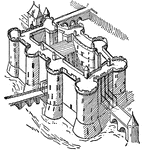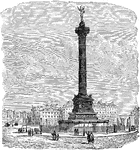Clipart tagged: ‘Bastille’

Bastile
"The taking of the Bastile, July 14, 1789. The Parisian mob, not satisfied with the formation of the…

Bastille
The Bastille, a fortress-prison in Paris remembered by the storming of the Bastille in the French Revolution.

Storming of the Bastille
The storming of a medieval fortress and prison in Paris by revolutionaries, which represented royal…

The Storming of the Bastille
The flashpoint of the French Revolution, where the prisoners of the Bastille were released by revolutionaries.

Colonne Juillet
"The Bastille, after its capture in 1789, was leveled to the ground, and its stones were used to build…

Place de la Bastille
An illustration of the Place de la Bastille which is a square in Paris where the Bastille Prison once…
